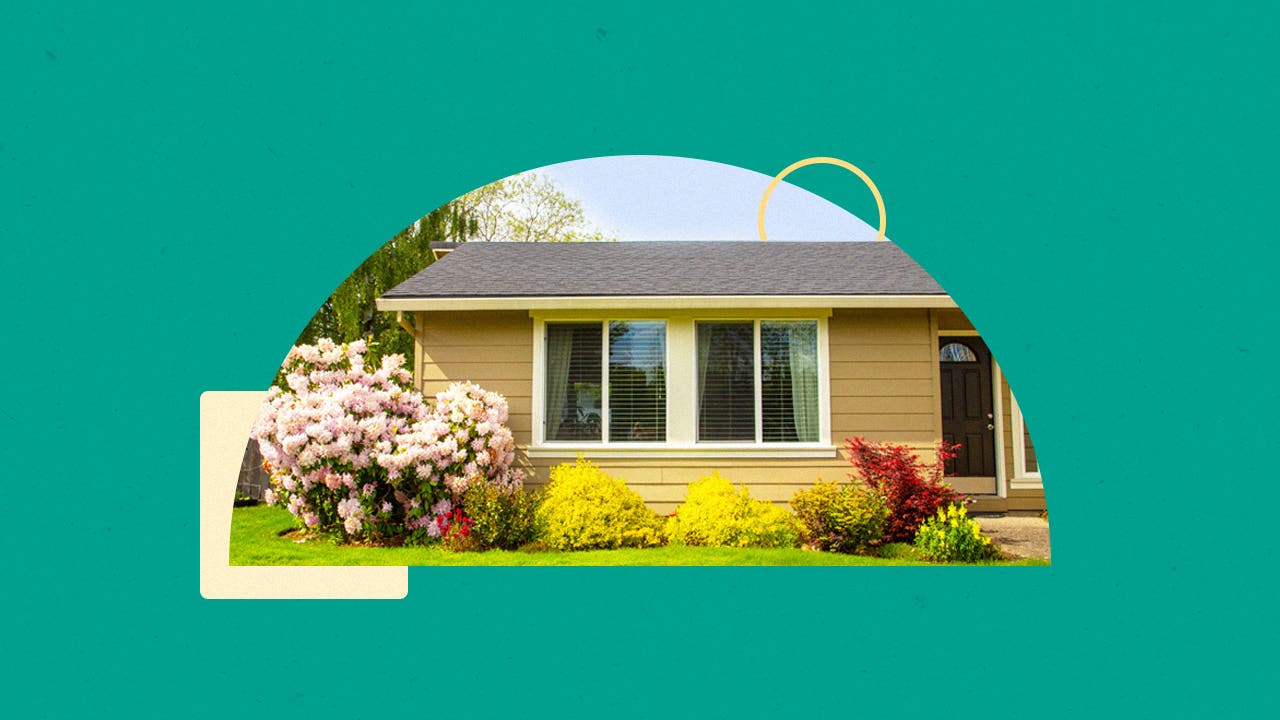Reverse mortgage: What it is and how it works

The Bankrate promise
At Bankrate we strive to help you make smarter financial decisions. While we adhere to strict , this post may contain references to products from our partners. Here's an explanation for .
Key takeaways
- A reverse mortgage allows older homeowners to tap their home's equity and receive tax-free payments. Many reverse mortgage borrowers use these payments to supplement retirement income.
- The most common type of reverse mortgage is a Home Equity Conversion Mortgage (HECM), for borrowers ages 62 and older. Some reverse mortgage lenders offer other options for borrowers ages 55 and older.
- From the payments to repayment, reverse mortgages can be structured in a number of ways. Consider talking to a financial advisor or your estate attorney to ensure you understand how this type of loan might affect your finances or those of your surviving spouse or heirs.
If you’re an older homeowner and need help managing expenses, you might be considering a reverse mortgage. These types of loans provide payments — tax-free — based on your home’s equity, with very specific rules attached. Here’s more on how reverse mortgages work and how to decide if it’s right for you.
What is a reverse mortgage?
A reverse mortgage is a type of loan that allows homeowners ages 62 and older to borrow against their home’s equity for tax-free payments. The reverse mortgage lender makes these payments to the homeowner. The homeowner doesn’t have to repay the reverse mortgage until death, or when they permanently move out or sell the home.
Typically, homeowners use reverse mortgages to supplement retirement income, pay for home repairs or cover medical expenses.
“In each situation where regular income or available savings are insufficient to cover expenses, a reverse mortgage can keep seniors from turning to high-interest lines of credit or other more costly loans,” says Bruce McClary, spokesperson for the National Foundation for Credit Counseling.
In addition, some reverse mortgage options allow the borrower to do a reverse purchase: use the payments to buy a new primary residence. This gives you the option to downsize or relocate from your current home as needed.
HECM vs. non-HECM reverse mortgages
How does a reverse mortgage work?
To be a candidate for a reverse mortgage, you’ll need a considerable amount of equity in your home. You won’t be able to borrow the entire value of your home, however, even if you’ve paid off your primary mortgage.
For a HECM, the amount a homeowner can borrow, known as the principal limit, varies based on the age of the youngest borrower or eligible non-borrowing spouse, current interest rates, the HECM mortgage limit ($1,149,825 in 2024) and the home’s value.
You’re more likely to be eligible for a higher principal limit the older you are, the more the property is worth and the lower the interest rate.
You might also be able to borrow more if you get a variable-rate HECM. With a variable interest rate, your payment options include:
- Equal monthly payments, provided at least one borrower lives in the property as their primary residence
- Equal monthly payments for a fixed period of months agreed on ahead of time
- A line of credit that can be accessed until it runs out
- A combination of a line of credit and fixed monthly payments for as long as you live in the home
- A combination of a line of credit, plus fixed monthly payments for a set length of time
If you choose a HECM with a fixed interest rate instead, you’ll receive a one-time, lump-sum payment.
With either option, the interest on the reverse mortgage accrues every month. You can roll these charges into the loan balance. Note that the interest rates on reverse mortgages vary by lender, but tend to be higher compared to a regular mortgage.
While you’re not required to repay the reverse mortgage while you live in the home, you’ll still need to pay for homeowners insurance, property taxes, any homeowners association dues and the home’s upkeep.
Types of reverse mortgages
Most reverse mortgage borrowers obtain a HECM, but there are other types of reverse mortgages, as well. Here’s a breakdown:
- Home Equity Conversion Mortgage (HECM) – The most popular type of reverse mortgage, HECMs are insured by the Federal Housing Administration (FHA). You can choose how to receive the payments, such as fixed monthly payments or a line of credit (or both options at once). Although widely available, HECMs are only offered by FHA-approved lenders, and before closing, all borrowers must consult with a U.S. Department of Housing and Urban Development-approved reverse mortgage counselor.
- Proprietary reverse mortgage – This is a loan offered by a private reverse mortgage lender and not insured by the government. Some proprietary reverse mortgage options allow you to take out a loan at age 55, rather than age 62. Typically, you can receive a larger loan advance, too, especially if you have a higher-valued home.
- Single-purpose reverse mortgage – Not as common as a HECM or proprietary reverse mortgage, this is a loan from a state or local government agency or nonprofit. Generally, it’s the least expensive of the three options, but you can only use the loan to cover one purpose, such as a handicap accessible remodel, says Jackie Boies, a senior director of Partner Relations for Money Management International, a nonprofit debt counselor based in Stafford, Texas.
Reverse mortgage requirements
To be eligible for a HECM reverse mortgage, the primary borrower must be age 62 or older. The other requirements for a HECM include:
- You must either own your home outright or have paid down at least half of your primary mortgage
- You must live in your home as your primary residence
- You must participate in an information session provided by a U.S. Department of Housing and Urban Development-approved reverse mortgage counselor
- You can’t be delinquent on any federal debt
- You must continue to pay homeowners insurance, property taxes and any homeowners association dues
Is a reverse mortgage right for you?
For many homeowners, a reverse mortgage makes it possible to stay in their homes as they age while receiving tax-free income. Many use the funds to supplement Social Security, cover medical expenses, pay for in-home care or make home improvements or modifications.
“A reverse mortgage can make sense for some seniors, mainly those who answer yes to these questions: Do you need additional income to pay your bills? Do you plan to stay in the home? And are you OK with passing on the property to your heirs with a debt they’ll need to pay off?” says Jeff Ostrowski, principal writer for Bankrate.
Still, a reverse mortgage loan isn’t without drawbacks. When it comes time to repay the balance, the amount can seem startlingly high, especially if you haven’t repaid any of it, or only made interest payments, during the borrowing period.
In addition, if the balance exceeds the home’s value upon your death, your heirs might need to hand ownership of the home back to the lender.
There could also be complications involving others who live in the home if they’re not co-borrowers or an eligible non-borrowing spouse — someone who married the borrower and moved in after the loan was taken out.
Keep in mind, too: While not all reverse mortgage lenders use high-pressure sales tactics, some do use them to attract borrowers. Proceed with caution in these circumstances.
“While a reverse mortgage creates some breathing room in your budget, borrowers beware,” says Ostrowski. “Lenders market these products aggressively, and the fees can be steep.”
‘We had three clear goals in getting our reverse mortgage’
Alternatives to a reverse mortgage
If you’re not sold on taking out a reverse mortgage, consider these other options:
- Home equity loan or home equity line of credit (HELOC) – Both options allow you to borrow against the equity in your home — up to 80 or 85 percent, in most cases. With a home equity loan, however, you’ll have to make monthly payments. With a HELOC, you’ll make payments after the draw period ends. The interest rates and fees for both options tend to be lower than those of a reverse mortgage.
- Refinancing – If you’ve yet to pay off your mortgage, refinancing to a new, shorter loan could help lower your monthly payments, especially if you can get a lower interest rate on top of the shorter term. If you need substantially more funds, you might want to look into a cash-out refinance instead.
- Shared equity agreement – With this arrangement, you’ll partner with a company to get money in exchange for a percentage of your home’s value, and often a piece of future appreciation as well. Like reverse mortgages, you aren’t obligated to make monthly payments with this option, but the money (technically an investment, not a loan) must be repaid once the term ends.
Reverse mortgage FAQ
-
If you borrow a HECM reverse mortgage, you’re required to pay mortgage insurance premiums along with other closing costs. Here’s a breakdown of these fees:
- Mortgage insurance premiums (MIP) – There is a 2 percent initial MIP due at closing, as well as an annual MIP equal to 0.5 percent of the outstanding loan balance. The MIP can be financed into the loan.
- Origination fee – To process your HECM loan, lenders charge the greater of $2,500 or 2 percent of the first $200,000 of your home’s value, plus 1 percent of the amount over $200,000. The fee is capped at $6,000.
- Servicing fees – Lenders can charge a monthly fee to maintain and monitor your HECM for the life of the loan. This monthly servicing fee can’t exceed $30 for loans with a fixed rate or an annually-adjusting rate, or $35 if the rate adjusts monthly.
- Third-party fees – Third parties can charge their own fees, as well, such as for the appraisal and home inspection, a credit check, title search and title insurance or a recording fee.
-
The amount of money you can get from a reverse mortgage depends on many factors, including the value of your home, your age and current interest rates. Note that you won’t be able to take out the full value of your home.
-
The biggest difference between a reverse mortgage and a regular mortgage is the purpose of the loan: Borrowers take out regular mortgages to buy homes, then repay those funds to the mortgage lender over a period of time, typically 15 or 30 years. With a reverse mortgage loan, the lender makes payments to the borrower, up to a limit, until the borrower dies or moves out or sells the home.
-
There are a few well-known national reverse mortgage lenders, and many regular mortgage lenders also offer reverse mortgages. As with a home purchase mortgage or refinance, take the time to shop around and compare loan offers.
-
Be wary of the signs of a reverse mortgage scam, including unsolicited loan offers, confusing or high-pressure sales tactics, a lender charging you for simple information or a lender attempting to pay you for a home you don’t own. If you’re not sure whether a reverse mortgage offer is legitimate, talk to a reverse mortgage counselor. You can find one using the U.S. Department of Housing and Urban Development’s website.
-
As with any mortgage, there are conditions for keeping your reverse mortgage in good standing, and if you fail to meet them, you could lose your home. For example, you could lose your home if:
- The home is no longer your primary residence.
- You decided to move or sell your home.
- You don’t pay your homeowners insurance or property taxes.
- The borrower dies or permanently vacates the home, and you are not a co-borrower or eligible non-borrowing spouse.
-
The right of rescission allows you to cancel most reverse mortgages without penalty as long as you make the request in writing within three days of closing and send it to your lender via certified mail. Your lender then has 20 days to return any funds you’ve already paid toward your loan.
Related Articles



